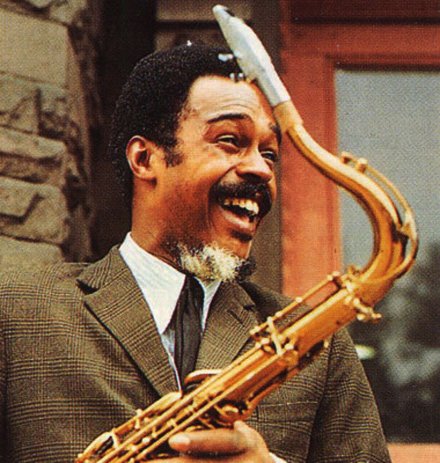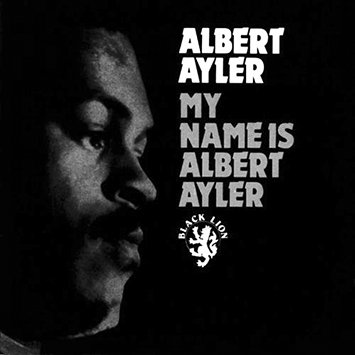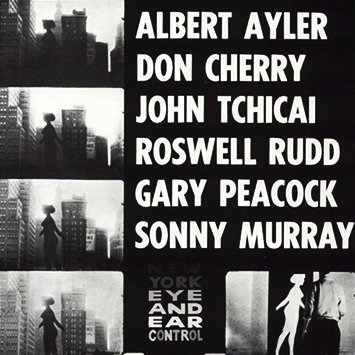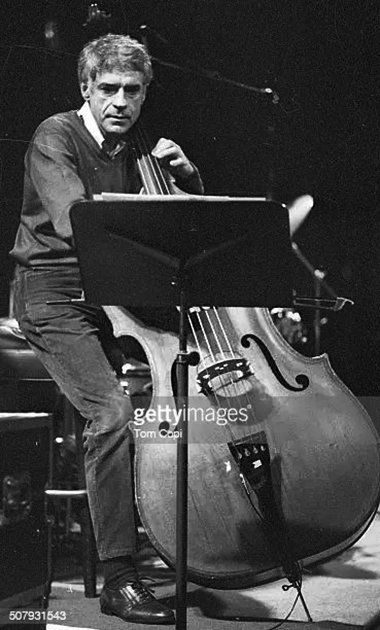Albert Ayler (saxo tenor), Gary Peacock (contrabajo) y Sunny Murray (percusión). Extraído del álbum Spiritual Unity (1965).
Albert Ayler era un saxofonista de free jazz, cantante y compositor norteamericano. Su objetivo era huir de las notas y entrar en un nuevo terreno en el que el saxofón creara «sonido». El sistema temperado de la música occidental era incapaz de abarcar los espasmos, bramidos y gemidos que salían de su instrumento. Era un virtuoso del sonido «sucio» con multitud de trucos: ondulaciones desafinadas, ladridos en el registro inferior y aullidos en el superior, un amplísimo vibrato y frases lanzadas como dardos. Llevó el vocabulario del saxofón a sus últimos límites. Sin embargo, sus composiciones presentaban simples melodías diatónicas que contrastaban con sus acaloradas improvisaciones de estilo free jazz. Su padre, que era saxofonista y violinista aficionado, le enseñó a tocar el saxofón alto y los dos tocaban dúos en la iglesia y escuchaban discos de jazz juntos. Al principio trabajó con la banda de rhythm and blues del cantante Little Walter durante dos vacaciones de verano y terminó el bachillerato en 1954. En 1958 se alistó en el ejército, donde tocó en bandas militares y practicó con otros músicos, incluido el saxofonista tenor Stanley Turrentine. Allí es donde cambió el saxofón alto por el tenor.
Albert Ayler was an American free jazz saxophonist, singer and composer. His goal was to avoid the notes and enter a new realm in which the saxophone created “sound”. The tempered system of Western music was unable to handle the spasms, bellows and moans that came from his instrument. He was a virtuoso of the “dirty” sound with a multitude of tricks: off-key ripples, barks in the lower register and howls in the upper one, a very wide vibrato and phrases thrown like darts. He took the saxophone vocabulary to its final limits. However, his compositions presented simple diatonic melodies that contrasted with his heated free jazz improvisations. His father, an amateur saxophonist and violinist, taught him to play the alto saxophone and the two of them played duets in the church and listened to jazz records together. He first worked with singer Little Walter’s rhythm and blues band for two summer holidays and completed high school in 1954. In 1958 he joined the army, where he played in military bands and practiced with other musicians, including tenor saxofonist Stanley Turrentine. That’s where he changed the alto saxophone for the tenor.

En 1961 Ayler abandonó el ejército y se trasladó a Los Ángeles, pero no encontró trabajo debido a su forma de tocar, así que en 1962 se marchó a Suecia, donde realizó sus primeras grabaciones. Allí tocó con el grupo del pianista Cecil Taylor y en 1963 se fue con él a Dinamarca, donde grabó su primer álbum como líder My Name Is Albert Ayler. Después se fue a Nueva York y en 1964 grabó Witches & Devils. También grabó el álbum New York Eye and Ear Control como banda sonora de la película con el mismo título de Michael Snow y luego hizo una gira por Europa con su trío habitual y el trompetista Don Cherry. Ese mismo año grabó su obra más importante, Spiritual Unity, con un nuevo trío. En 1965 formó un grupo con su hermano Donald, que trasladó a la trompeta el estilo expresivo de su improvisación hasta que sufrió una crisis nerviosa en 1967. En este grupo Ayler comenzó a utilizar melodías folklóricas e improvisación colectiva. En 1966 firmó con el sello Impulse! aconsejado por el saxofonista tenor John Coltrane, incorporando en sus grabaciones blues, góspel, rhythm and blues, rock y música vocal, pero ni siquiera de este modo encontró audiencia. En 1970 su cuerpo sin vida fue encontrado flotando en el East River de Brookling en extrañas circunstancias.
In 1961 Ayler left the army and moved to Los Angeles, but didn’t find work because of his playing, so in 1962 he went to Sweden, where he made his first recordings. There he played with pianist Cecil Taylor’s group and in 1963 he travelled with him to Denmark, where he recorded his first album as a leader My Name Is Albert Ayler. Then he left to New York and in 1964 published Witches & Devils. He also recorded the album New York Eye and Ear Control as the soundtrack for the film with the same title by Michael Snow and then toured Europe with his usual trio and trumpeter Don Cherry. In 1964 Ayler recorded his most important work, Spiritual Unity, with a new trio. In 1965 he formed a band with his brother Donald, who brought his expressive style of improvisation to the trumpet until he suffered a nervous breakdown in 1967. In this group Ayler began to use folk melodies and collective improvisation. In 1966 he signed with Impulse! advised by tenor saxofonist John Coltrane, incorporating in his recordings blues, gospel, rhythm and blues, rock and vocal music, but not even in this way found audience. In 1970 his lifeless body was found floating in the East River of Brookling in strange circumstances.


El tema es un angustioso lamento interpretado por Ayler al que se le une Peacock que toca el contrabajo con el arco y Murray interviniendo de forma sutil. Ayler extrae sollozos y gemidos del saxofón y habla a través de él quejándose de su condición humana y de las duras condiciones en las que le toca vivir. Su desesperación alcanza niveles insospechados. Va contando su triste historia con todo lujo de detalles. Es impresionante cómo es capaz de expresar emociones humanas a través de su instrumento y se pone a suplicar e implorar que se acabe su sufrimiento. A continuación entra Peacock de forma apesadumbrada tocando frases melódicas, pero a veces inconexas. Entonces vuelve Ayler, que sigue desolado y afligido hasta que termina su discurso.
The theme is a heartbreaking lament played by Ayler, who is joined by Peacock playing the double bass with the bow and Murray intervening in a subtle way. Ayler draws cries and groans from the saxophone and speaks through it, complaining about his human condition and the harsh circumstances in which he lives. His despair reaches unexpected levels. He tells his sad story in great detail. It’s impressive how he is able to express human emotions through his instrument and starts to beg and implore an end to his suffering. Afterwards, Peacock enters in a sorrowful manner performing melodic but sometimes disconnected phrases. Next Ayler reappears remaining desolated and afflicted until his dialog ends.

Translated with the help of DeepL
℗ ESP-Disk


Si te ha gustado el tema, quizá querrás escuchar también el primero de este álbum:
If you liked the track, you might also want to listen to the first one on this album:


¡Enhorabuena!
✅ Has hecho un buen trabajo, por lo cual tu publicación ha sido valorada y ha recibido el apoyo de parte de CHESS BROTHERS ♔ 💪
♟ Te invitamos a usar nuestra etiqueta #chessbrothers y a que aprendas más sobre nosotros.
♟♟ También puedes contactarnos en nuestro servidor de Discord y promocionar allí tus publicaciones.
♟♟♟ Considera unirte a nuestro trail de curación para que trabajemos en equipo y recibas recompensas automáticamente.
♞♟ Echa un vistazo a nuestra cuenta @chessbrotherspro para que te informes sobre el proceso de curación llevado a diario por nuestro equipo.
🏅 Si quieres obtener ganancias con tu delegacion de HP y apoyar a nuestro proyecto, te invitamos a unirte al plan Master Investor. Aquí puedes aprender cómo hacerlo.
Cordialmente
El equipo de CHESS BROTHERS